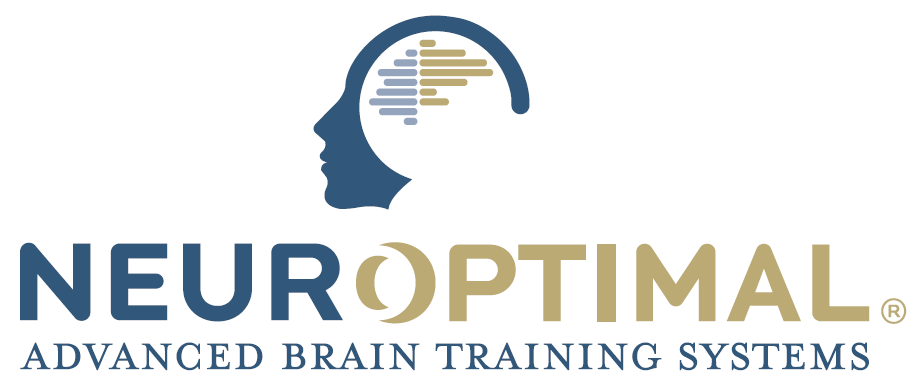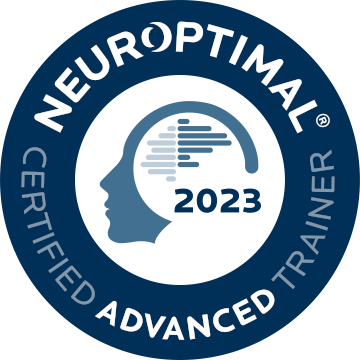
NeurOptimal® is an advanced neurotechnology designed to train the brain to function at peak performance levels.
Enhance Your Brain’s Potential, Encouraging Greater Flexibility, Resilience & Efficiency!
We are proud to offer Dynamical Neurofeedback, uniquely developed by Zengar Institute, the secret success of NeurOptimal® Neurofeedback Training.
Dynamical Neurofeedback is designed to take advantage of your brain’s natural learning processes, encouraging it to function as it was beautifully created.
Dynamical Neurofeedback technology unique to the NeurOptimal® Trainer interface is based on Brain Dynamics, Process Variability, and Functional Targeting.
Brain Dynamics – Your brain is a non-linear, dynamical organ; a beautifully designed system that perceives information and adjusts to incoming stimuli in a dynamic of ceaseless, flowing, perpetual processes.
Nonlinear dynamical analysis of EEG and MEG: Review of an emerging field
Process Variability – In addition to infinite cycling and self-regulation, your brain does not possess absolute values for how much of any particular brain activity is inherently “optimal” for certain activities. Any such “average” significantly varies from person to person and from moment to moment throughout the day. This amount depends on many factors: the task in which the person is engaged; time of day, bodily function status such as blood sugar levels; the recent amount of rest and sleep, and overall health. NeurOptimal® uses the understanding of process variability, harnessing your brain’s intrinsic intelligence to regulate the amount of energy and brain activity necessary (As seen in dynamical brain activity changes in this epileptic study.)
Epilepsies as dynamical diseases of brain systems: basic models of the transition between normal and epileptic activity
Functional Targeting – Explores the understanding that while there are some physiological functions that are largely localized to a pinpoint site within your brain, the larger reality is that your brain is a vastly interconnected network of multiple, distributed functions and locations. It operates much like the entire Worldwide Web does. This means, among other things, that there is a dynamic range of variability within different regions of your brain that determines the optimal psychological balance for each individual. This range also varies dynamically, moment to moment, depending on the processes that are active at that moment in time. Assessing only one point in time to address one function or another will ultimately miss the mark because your brain has already “moved on”.
[Dynamic paradigm in psychopathology: “chaos theory”, from physics to psychiatry]

These principles guide the design of NeurOptimal®’s training systems and ultimately account for Dynamical Neurofeedback’s effectiveness in addressing a broad range of concerns, across the wide range of settings in which it has been used.
Similarly, Dynamical Neurofeedback allows your brain to assemble its own response and coping strategies based on incoming information. As a result, the NeurOptimal® system is intrinsically non-invasive and non-corrective.
Given these multiple variables, Dynamical Neurofeedback® does not attempt to restore your brain’s electrical activity to some presumed “average” or “best” level. Instead, Dynamical Neurofeedback® is designed to monitor your brain’s electrical activity and – through audible feedback interruptions – notify your brain when it is about to reach the edge of its stability in some region of function. There is nothing intrinsically problematic in reaching the edge of stability. It is precisely what happens when someone goes to sleep. The transition from wakeful consciousness to sleep occurs through a turbulent transition that is marked by the sudden onset of stability: wakefulness collapses as sleepiness emerges and then transitions rapidly into a light sleep.
Complexity of EEG‐signal in Time Domain ‐ Possible Biomedical Application
The NeurOptimal® system provides a signal, or feedback, to alert your brain that such a transition between states is about to occur. This notification prompts your brain to determine if the transition is desirable or problematic given the current conditions. Such as the natural transition into sleep would be problematic if it occurred while driving in rush hour.
Dynamical Neurofeedback®, then, allows your brain to reconnect with its own internal resources to determine what is appropriate in various situations and how best to handle this information. It is the NeurOptimal® system’s ebb and flow of information at a rapid speed of 256 times per second that allows Dynamical Neurofeedback® to produce such positive effects for so many people, regardless of what particular concerns prompted the neurofeedback training. This non-invasive prompting encourages your brain to return to far more efficient and effective operation, regardless of internal and external challenges and demands. As a result, symptoms and problems simply drop away, seamlessly, for most people.
“No Chasing Problems” • “No Potential Side Effects” • “No Harsh, Difficult Work”
NeurOptimal® simply provides the central nervous system with information about what it has already done and allows your brain itself to sort out the value of that information.


